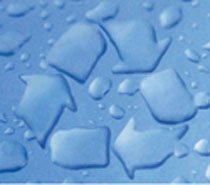

Why Recycle Water?
Water recycling is reusing treated wastewater for beneficial purposes such as agricultural and landscape irrigation, industrial processes, toilet flushing, and replenishing a ground water basin. Through the natural water cycle, the earth has recycled and reused water for millions of years. Water recycling, though, generally refers to projects that use technology to speed up these natural processes. Water recycling is often characterized as "unplanned" or "planned." A common example of unplanned water recycling occurs when cities draw their water supplies from rivers, such as the Colorado River and the Mississippi River, that receive wastewater discharges upstream from those cities.Recycled water can satisfy most water demands, as long as it is adequately treated to ensure water quality appropriate for the use.

- Pretreatment: Metal screens are used to remove large objects and chunks of debris when water passes through.
- Primary treatment: Gravity is used to cause solid matter to settle to the bottom of large basins.
- Secondary treatment: Microorganisms are added to digest any remaining pollutants. Air is also added to speed up digestion. After the microorganisms have "eaten," they settle to the bottom of large basins.
- Tertiary treatment: Remaining small solid particles are mixed with a chemical to form larger particles called floc. The floc is then trapped in filters containing anthracite coal and/or sand. Chlorine or another type of disinfectant is added to water to ensure that the water is safe before being released back to into the environment through a network of underground pipelines. The recycled water pipelines are separate from drinking water pipelines.


